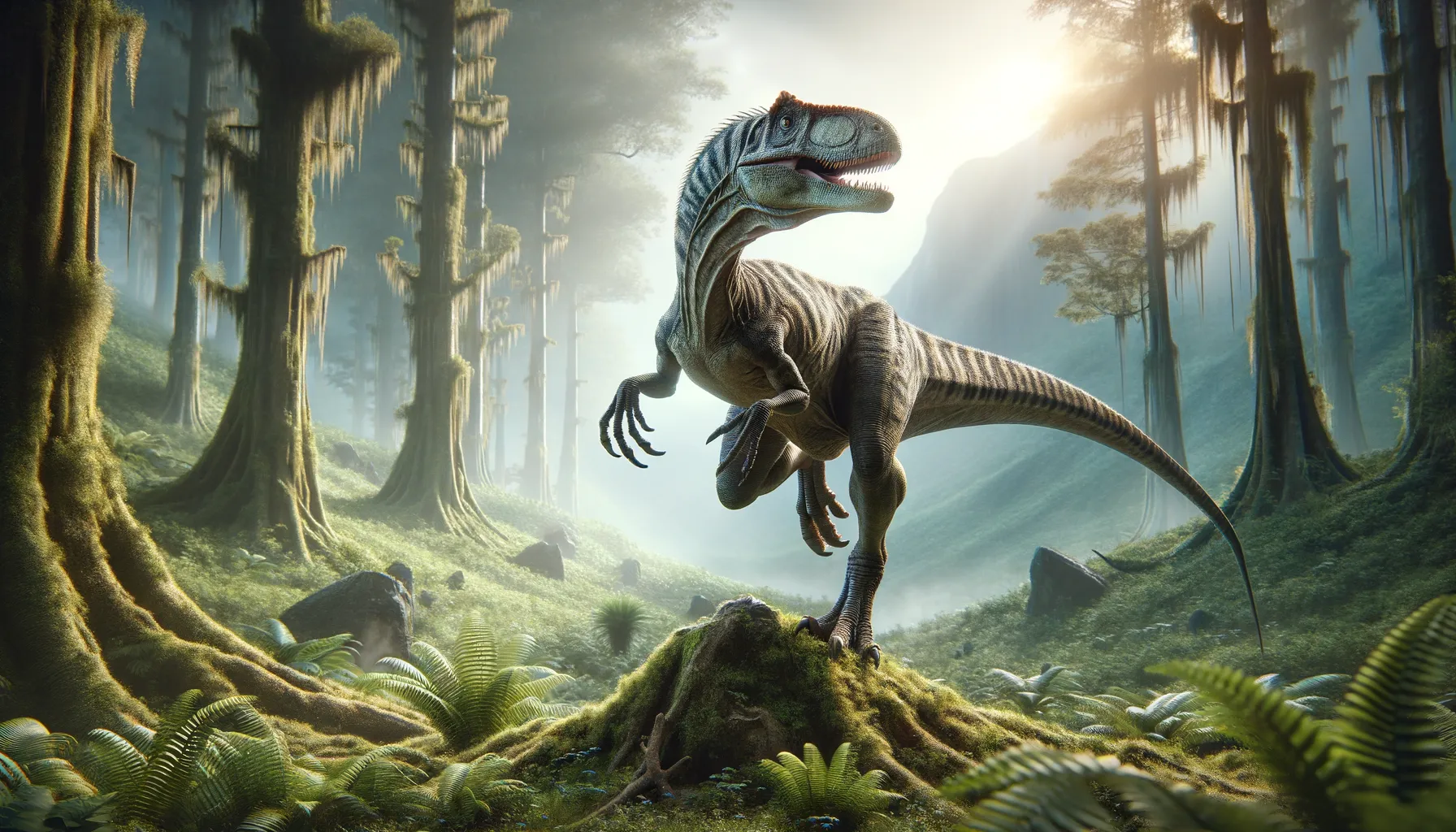
Powellvenator
Agility and stealth from a bygone era.
Period
Jurassic
Length
Around 3 meters long.
Height
Roughly 1 meter tall.
Weight
Approximately 45 to 90 kg.
Powellvenator was a small, agile theropod that roamed the landscapes of modern-day South America during the Jurassic period. Known for its agility, Powellvenator likely preyed on small vertebrates and insects. Its fossils provide valuable insights into the diversification of early theropods, being part of a lineage that would give rise to the more dominant carnivorous dinosaurs of later periods.
Diet
Powellvenator was likely a carnivore, feeding on small vertebrates and insects. It relied on agility rather than brute force to catch its prey, highlighting its adaptation to a diverse diet.
Hunting
It probably used its speed and sharp senses to ambush unsuspecting prey. Despite its size, Powellvenator was an adept hunter in its ecosystem, exploiting its agile movements to secure food.
Environmental challenges
Powellvenator lived in environments that were in constant geological and climatic flux. It had to navigate through dense forests and open plains, adapting to seasonal changes. Its small size may have been advantageous in evading larger predators and competing with other small carnivores.
Speed
Moderate, with bursts for hunting.
Lifespan
Estimated to live for several decades.
First discovery
Discovered in Argentina in the Late 20th Century.
Fun Facts
- Powellvenator was a small theropod dinosaur that lived during the Late Triassic period.
- This dinosaur's name, Powellvenator, means 'Powell's hunter', named after an Argentine paleontologist.
- Despite being a meat-eater, Powellvenator was quite small, about the size of a large chicken.
- Powellvenator's fossils were first discovered in Argentina, providing insights into early dinosaur evolution.
- The dinosaur likely had a lightweight body structure that helped it move quickly on two legs.
- Powellvenator's habitat was likely a diverse environment rich with other early dinosaurs and ancient reptiles.
Growth and Development
This dinosaur likely grew rapidly to ensure survival in a competitive ecosystem. As juveniles, Powellvenator might have faced threats not only from predators but also from elements such as harsh weather. Social structures may have helped in nurturing the young.
Habitat
Found in what is today Argentina, Powellvenator likely inhabited areas that provided ample cover and hunting opportunities. Its ecosystem would have included conifers and ferns, providing both sustenance and shelter. The habitat may have had climatic conditions ranging from humid to semi-arid.
Interaction with other species
Powellvenator coexisted with other small theropods, and occasional interactions with larger predators were likely. It competed for food resources with its contemporaries and had to be wary of becoming prey to larger carnivores. Symbiotic relationships with scavengers are also a possibility.
Natural lifespan
The natural lifespan could extend up to twenty or thirty years.
Reproduction
Powellvenator likely laid eggs, similar to other theropods. Nesting sites would have been strategically chosen to maximize the survival chance of the offspring. Parental care may have been exhibited to some degree, particularly to protect young hatchlings.
Social behaviour
Powellvenator might have lived in small packs or solitary, depending on the availability of resources. Social structures could have been rudimentary, with possible cooperation during hunting or nesting. Communication likely involved vocalizations or visual displays.
Fossil locations
Fossil remains of Powellvenator have primarily been unearthed in Argentina, specifically in formations known for yielding Jurassic-era faunal assemblages. These sites provide crucial data about the dinosaur's habitat and ecological niche during its time.
